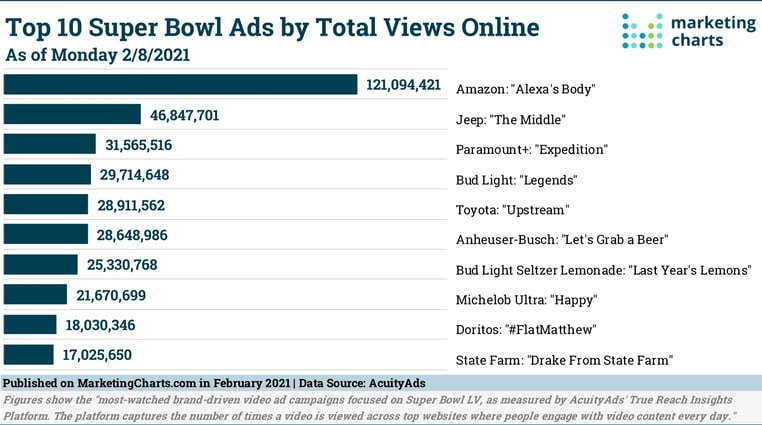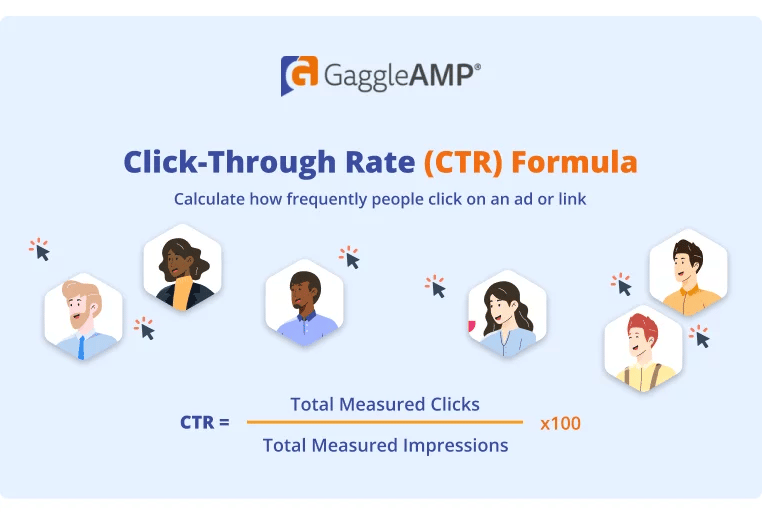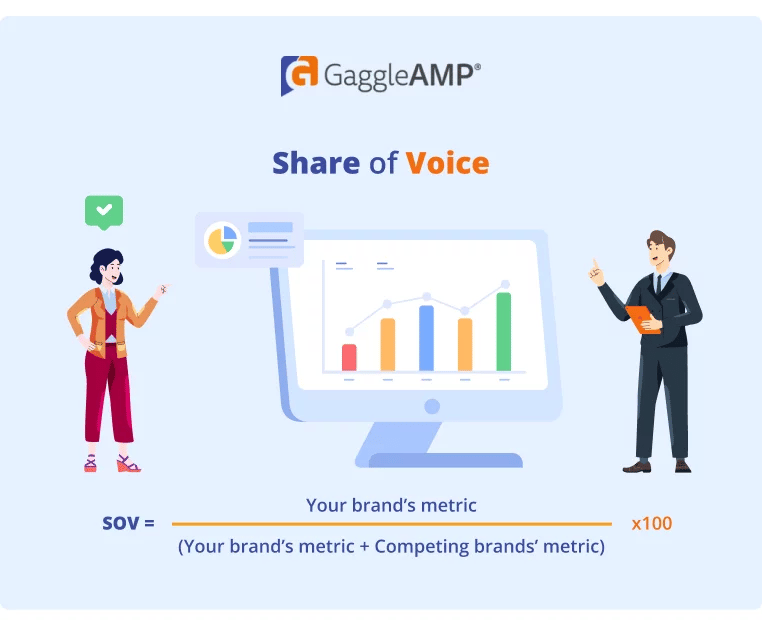Brand Awareness Key Performance Indicators and How to Measure Them
Most of the world’s biggest consumer-facing companies have one thing in common — a formidable brand. Brands like P&G, Apple, Facebook, and Amazon are great assets for their respective companies because of their instant recognizability and trustworthiness. Both of these attributes are the result of years of coherent marketing and branding efforts. With the right branding strategies, you can help businesses establish a well-known and profitable brand for themselves.
The first step to that end would be helping clients create brand awareness among their customers. To fully understand the importance of brand awareness, let’s first understand what it is and how it affects sales.
Brand Awareness in a Nutshell
Brand awareness is the term used to describe the extent to which customers recognize a company and its products or services. High levels of brand awareness correlate directly to more sales. This is because, when faced with a choice, customers usually prefer shopping with brands that they can name and recognize. In short, name brands usually seem more familiar and trustworthy.
In highly competitive markets, brand awareness could very well mean the difference between survival and extinction. Most aerated beverages, for example, are virtually indistinguishable when served in clear, label-less bottles. Major brands like Pepsi and Coca-Cola solely rely on their innovative marketing strategies, well-established brands, and brand advocacy to edge out their competition. However, the major problem with creating brand awareness in today’s saturated markets is that the concept itself has become somewhat vague.

In any given market sector, you will find several companies fighting for the consumer’s attention, which makes it harder for new businesses to establish themselves as recognizable brands. Further, the advent of omnichannel marketing has opened up several different avenues for marketers. This makes it even harder for marketers to quantify brand awareness since now you need to collect diverse metrics from different digital and social media platforms and find ways to integrate them into one standard format. This makes it important for you to focus on the right brand awareness metrics and monitor them closely.
Here are a few key brand awareness metrics and key performance indicators (KPIs) that can help you sort through the noise and generate credible brand performance data.
Key Brand Awareness Metrics
t is important to start by benchmarking the brand’s current performance. Benchmarking current brand awareness metrics allows you to measure brand performance and draw key insights right from the beginning. For example, if you choose to monitor how many times a company’s social media posts are shared across their social channels, you should start by earmarking the current number. This will help you establish a baseline against which you can measure the future performance of social media marketing campaigns.
Brand Impressions
Brand impressions measure the number of times your ads are shown to customers within a specific period. For example, a TV ad may be shown during the Super Bowl and subsequently viewed across a number of websites after it has aired on TV. Those are impressions that the brand was able to secure and they can have a massive impact on your brand awareness as you must first have an impression to get a view.

Brand impressions are a fundamental brand awareness metric you can measure since it represents the effective visibility of a brand. Increasing a brand’s overall visibility to the customers is paramount to building a trusted consumer brand. You can measure brand impressions via any chosen distribution channel like Facebook, Instagram, YouTube, and Google Ad Words.
Click-Through Rate
Click-through rate (or CTR) is the percentage ratio of the number of people who see a hyperlink to the number of persons who click on it.
All distribution channels will communicate your CTR as a measure of value in your marketing or ad campaigns. The click-through rate measures how often customers engage with your brand. For advertising platforms like Instagram and YouTube, click-through rates depend on the thumbnails and banners with which you run your ads. More clicks on these ads directly translate to a higher rate of engagement, which helps push your posts and ads further on these platforms.
Social Media Engagement
Most social media platforms offer built-in and robust analytics tools that help you measure how often your brand’s audience interacts with its content and in what ways. Brand impressions are just one measure of social media engagement. Others include:
-
Reach
-
Likes
-
Shares
-
Follows
-
Comments
-
Public hashtag use.
When done well, creating brand awareness through social media engagement can become a self-sustaining process.
When you put out a relevant social media post that caters to your audience’s tastes and interests, it receives engagement in the form of views, likes, comments, and shares. The more a post is shared, the more impressions it gets. This increases your chances of gaining social media followers, that is people who will be shown your content regularly. Content with high engagement is also pushed organically by social media algorithms, which gives it more impressions and an even higher reach. In this way, a well-performing social media page can prove a precious branding and marketing tool for you.
Share of Voice and Share of Impressions
Share of voice and share of impressions are both excellent competitive analysis metrics that can tell you how well a brand is doing on the web as compared to its competitors. A higher share of voice and impressions suggests that the brand has been able to capture consumer attention and make space for itself in the market. Here’s how you calculate them.
Share of Voice

Share of voice is the percentage of times your brand is mentioned on the internet in all conversations about your market sector (including the ones about competing businesses). It is largely a qualitative metric that measures how well your brand has been able to impact cultural standards.
A high share of voice suggests a good level of brand awareness among customers. To calculate, you can use the following formula where the metric can be anything from social media mentions to instances of hashtag use.
The formula for share of voice is:
Share of voice = Your brand’s metric / (Your brand’s metric + Competing brands’ metric) x 100.
Share of Impressions

Share of impressions is simply the percentage of impressions that a brand’s ads receive compared to the total number of impressions they could receive. Unlike share of voice, the share of impressions is a direct, quantitative measure that is used to monitor ad performance.
Share of impressions can further be divided into finer metrics like share of absolute top impressions, which is the percentage of impressions a brand’s ads get in the most prominent ad position on a website. For example, you could measure how often your ad is shown as a ‘featured snippet’ for Google searches out of all possible opportunities.
The formula for a share of impressions is:
Share of impressions = impressions / (Total eligible impressions x 100)
Analytics services like Google Analytics allow you to calculate your share of impressions easily.
Measuring the Immeasurable - Dark Social
When dealing with brand awareness metrics and KPIs (Key Performance Indicators), you’ll quickly realize that not all of them can be measured as easily. While it is difficult to quantify brand awareness in general, some awareness metrics are even harder to measure since there is no straightforward method to measure them.
The most prominent of these is dark social engagement. Dark social is a term used to refer to all social interaction between users that takes place on protected channels like Facebook Messenger, WhatsApp, iMessage, and others. Businesses and marketers are usually prohibited from accessing this data due to user privacy concerns. This makes it virtually impossible for brands to measure how often their links are shared with people over private messages.
Another form of dark social includes those that are consuming your content but not interacting with it. For example, they may see a LinkedIn thread, content in a Slack community, or silently otherwise observing. There is no engagement, and you don’t know they are there, but you’re leaving an impression on them to recall in a time of need.
How to Measure Dark Social
One way to measure dark social engagement is to isolate the visitors that could have only come to your website through links sent over personal messages. You can do this by calculating individual engagement metrics for all your marketing channels. When you subtract these from the net brand engagement seen by an awareness campaign, you’re left with engagement received through dark social and visitors that get to your website by directly entering the URL into their browser’s search bar. For new and relatively smaller brands, the latter can be considered negligible.
Brand awareness metrics and KPIs help marketers closely monitor a brand’s popularity and campaign performance. Analyzing a brand’s awareness KPIs allows companies to uncover the possible drawbacks of their branding and marketing campaigns, which can then be fixed to produce a better, more refined marketing workflow.
GaggleAMP helps teams leverage the power of employee advocacy to help amplify their brand awareness and marketing campaigns. Our platform allows you to request your employees to perform over 50 different activities on platforms like LinkedIn, Twitter, Facebook, Instagram, YouTube, Pinterest, Xing, and Glassdoor. Our one-click employee advocacy activities further keep your employees active in their day-to-day while still contributing to your employee advocacy efforts. Visit us at GaggleAMP to learn more about how we can help you drive better brand awareness for your organization.











